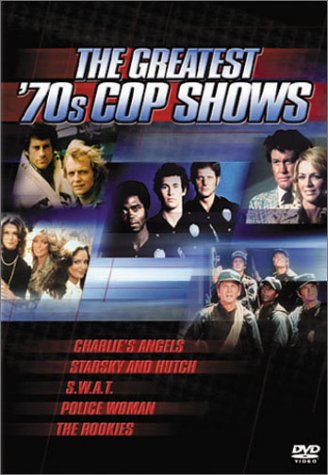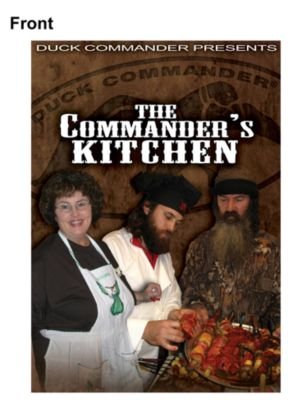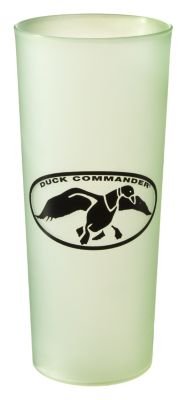"Journey" Could Be a Landmark Achievement for Gaming
Video
games have come a long way since they first surfaced in the 80's. They
have secured themselves as a staple of entertainment for every
generation since that time and become a common part of the modern
lifestyle all over the world. But every now and then, a video game comes
along to push these established boundaries; to make us wonder whether
games should be considered just an entertainment medium, or something
more. One of these games is called...

Journey was released exclusively for the Playstation Network (and thus, the Playstation3) to be purchased and played via download in March 2012. But despite being just a Network title, the game has been so popular it has prompted a physical release, along with two other successful games created by thatgamecompany. That's not a typo, by the way; "thatgamecompany" is actually the developer of this game. And the name choice really reflects their unique approach to gaming with this title.
Journey is not like other video games of the current decade (heck, it may be unlike another video game, ever) and it does things differently than most of us are used to. Journey is more akin to interactive artwork than interactive entertainment. I'm going to break it down to try to place what makes it that way.
The first thing to say about the visuals is that they are absolutely breathtaking. The game is set in a barren desert, so the player is usually surrounded by sand. The way this sand is animated, however, is nothing short of beautiful. It will sparkle in the sun, and it will ripple as you walk through it. It gives a very fluid, very natural sense to the character's movement that makes you feel like part of the world.
To expand on that, Journey very much uses visuals to explain to the player what sort of atmosphere the game is set in. They serve in this game, as I said, to be the dialogue; to tell you what is going on, like words usually would. It's very interesting to see how the visuals move the story forward, in lieu of traditonal text or voice work. For example, in the beginning of the game, the screen is covered by large hills and expanses of sand as far as the eye can see. There is little music being played, and the only sound is a serene wind sweeping around you. There is a sense of awe, as well as a sad calmness that can be sensed just by looking around, with tiny, ominous gravestones poking from the sand dunes.
I know at least I can tell that despite not even having any indication as to why the character is there, or what happened in the past to bring them there, that whatever happened before the game's time, was bad. Things weren't cheerful, and the attention to detail in the visual landscape really drove that home for me.
There's a lot more to it than that, however. As the game moves forward, the scenery changes. One of the most iconic of the stages is the "Sunken City" level. In that level, your character is sliding through the sands towards the bottom of a ruined city in the desert. As you go, however, the music picks up in an exciting crescendo, and you find your character going through a remarkable circle of pillars, with the sinking sunlight lighting it up in a sparkling slide mingled with shadows. You keep sliding down the spiraling hill with greater and greater speed until finally, a vast pit appears in front of you. The music stops, and everything is black. And without spoiling, you know, as a player, that danger lurks in this giant, black cavern. That's what the visuals in this game do, and my words simply cannot do them justice. Perhaps that's the power they have found in letting the visuals set the tone of the story; they do what words just can't.
The soundtrack of Journey is considered such a masterpiece that the game was just recently nominated for the Grammy award for "best score soundtrack for visual media." It marks the first time a video game has ever received such an honor. And part of the reason why the game's soundtrack has made such an impact on the critical audience is that, like its visuals, the audio of Journey seeks to convey the atmosphere of the game instead of actual dialogue.
The score is composed of a full orchestra, with each piece based upon the events of the game. In the beginning, there is a calming, relaxing tone to the music, as things slowly get underway. Later, when things move faster--like in the sliding scene in the above video--the music quickens the pace as well. It gets loud at the most exciting moments, soft at the most ominous or calm. Without spoiling too much, I can say that the music punctuates beautiful visuals in the final stages of the game in such a way that I can never forget it. And neither will you, if you play it yourself.
The music isn't just there for the background, however. One of the game's main themes is the use of spiritual sounds to create paths as well as advance the plot. When you touch certain objects, they will light up and play music for as long as you're in contact with them. Even the bizarre creatures in the game each have whale-like calls that echo around your character. This is what makes moments of stark silence so impacting in the game, such as the cavern at the end of the above video, or later in the game when the character walks through snowy mountains. There is nothing to touch, nothing around, so music is shockingly absent from an otherwise musical game. The ways thatgamecompany matched key moments in the game with moments of sound is nothing short of masterful.
By the end of the game, if you had traveled with the same companion since the beginning, you will feel as if you have shared something remarkable with them. The most powerful characteristic of Journey is that it can make you feel connected to a person this way. More so, it makes you feel connected to the actual character you control, on a quest through perilous landscapes, all to reach the light on top of the mountain.

Like poetry or a work of art, the game is aiming to draw an emotional response from the audience. It is not necessarily trying to tell a story with characters and a plot (though, through the above mentioned things, there are clues to what it may be). The storyline of Journey is something frequently debated, with most people seeing it as metaphorical for a spiritual journey of some kind. Some think it's a religious allegory. Some think it is a representation of how humanity may rise, fall, and then persevere in spirit in the aftermath of sin.
Whatever it is about, it clearly seems to hold a profound and deep meaning for those who question it critically. It always seems to be saying something from within the player, something emotional and something beautiful. To me, that sounds like a work of art, perhaps a musical masterpiece. Nobody knows exactly what it all means, but it captures something in our hearts.
That's what makes Journey a video game that goes beyond entertainment value. It is a window that can change the way we view the world, from within our own imaginations

Journey was released exclusively for the Playstation Network (and thus, the Playstation3) to be purchased and played via download in March 2012. But despite being just a Network title, the game has been so popular it has prompted a physical release, along with two other successful games created by thatgamecompany. That's not a typo, by the way; "thatgamecompany" is actually the developer of this game. And the name choice really reflects their unique approach to gaming with this title.
Journey is not like other video games of the current decade (heck, it may be unlike another video game, ever) and it does things differently than most of us are used to. Journey is more akin to interactive artwork than interactive entertainment. I'm going to break it down to try to place what makes it that way.
A Story Written with Visuals
A Journey needs no dialogue.
Journey is different in that there is absolutely no dialogue in the game to guide you or tell the story. That means no voiceovers, no thought bubbles and no text. You might think, "Hey, then how does the darn game even convey a story at all?" Well, as a matter of fact, it still manages to have a pretty coherent plot. But the game uses its captivating visuals to create the danger, suspense, spirituality, and excitement that most games use dialogue to create.The first thing to say about the visuals is that they are absolutely breathtaking. The game is set in a barren desert, so the player is usually surrounded by sand. The way this sand is animated, however, is nothing short of beautiful. It will sparkle in the sun, and it will ripple as you walk through it. It gives a very fluid, very natural sense to the character's movement that makes you feel like part of the world.
To expand on that, Journey very much uses visuals to explain to the player what sort of atmosphere the game is set in. They serve in this game, as I said, to be the dialogue; to tell you what is going on, like words usually would. It's very interesting to see how the visuals move the story forward, in lieu of traditonal text or voice work. For example, in the beginning of the game, the screen is covered by large hills and expanses of sand as far as the eye can see. There is little music being played, and the only sound is a serene wind sweeping around you. There is a sense of awe, as well as a sad calmness that can be sensed just by looking around, with tiny, ominous gravestones poking from the sand dunes.
I know at least I can tell that despite not even having any indication as to why the character is there, or what happened in the past to bring them there, that whatever happened before the game's time, was bad. Things weren't cheerful, and the attention to detail in the visual landscape really drove that home for me.
There's a lot more to it than that, however. As the game moves forward, the scenery changes. One of the most iconic of the stages is the "Sunken City" level. In that level, your character is sliding through the sands towards the bottom of a ruined city in the desert. As you go, however, the music picks up in an exciting crescendo, and you find your character going through a remarkable circle of pillars, with the sinking sunlight lighting it up in a sparkling slide mingled with shadows. You keep sliding down the spiraling hill with greater and greater speed until finally, a vast pit appears in front of you. The music stops, and everything is black. And without spoiling, you know, as a player, that danger lurks in this giant, black cavern. That's what the visuals in this game do, and my words simply cannot do them justice. Perhaps that's the power they have found in letting the visuals set the tone of the story; they do what words just can't.
Skip to about 4:10 to see exactly what I'm talking about.
A Story Told by Music
A Journey needs no narration.
No doubt that besides noticing the stunning visuals in the video above, you also noticed how the music really added to the emotion of the scenery. If the visuals are the words of the dialogue, then the soundtrack for the game is best described as the voice used to speak them.The soundtrack of Journey is considered such a masterpiece that the game was just recently nominated for the Grammy award for "best score soundtrack for visual media." It marks the first time a video game has ever received such an honor. And part of the reason why the game's soundtrack has made such an impact on the critical audience is that, like its visuals, the audio of Journey seeks to convey the atmosphere of the game instead of actual dialogue.
The score is composed of a full orchestra, with each piece based upon the events of the game. In the beginning, there is a calming, relaxing tone to the music, as things slowly get underway. Later, when things move faster--like in the sliding scene in the above video--the music quickens the pace as well. It gets loud at the most exciting moments, soft at the most ominous or calm. Without spoiling too much, I can say that the music punctuates beautiful visuals in the final stages of the game in such a way that I can never forget it. And neither will you, if you play it yourself.
The music isn't just there for the background, however. One of the game's main themes is the use of spiritual sounds to create paths as well as advance the plot. When you touch certain objects, they will light up and play music for as long as you're in contact with them. Even the bizarre creatures in the game each have whale-like calls that echo around your character. This is what makes moments of stark silence so impacting in the game, such as the cavern at the end of the above video, or later in the game when the character walks through snowy mountains. There is nothing to touch, nothing around, so music is shockingly absent from an otherwise musical game. The ways thatgamecompany matched key moments in the game with moments of sound is nothing short of masterful.
A Story that Enters the Heart
A Journey comes from within.
One of the most unique things about Journey is the way you can play it with others. The game will automatically match you with someone else who is playing at the same time as you, and you will move throughout the game together. You will never be able to communicate, and you will never know their name until the very end. But because of the intensity of some situations and what the visuals and music offer them, there will be moments where you feel close to this person.By the end of the game, if you had traveled with the same companion since the beginning, you will feel as if you have shared something remarkable with them. The most powerful characteristic of Journey is that it can make you feel connected to a person this way. More so, it makes you feel connected to the actual character you control, on a quest through perilous landscapes, all to reach the light on top of the mountain.

Like poetry or a work of art, the game is aiming to draw an emotional response from the audience. It is not necessarily trying to tell a story with characters and a plot (though, through the above mentioned things, there are clues to what it may be). The storyline of Journey is something frequently debated, with most people seeing it as metaphorical for a spiritual journey of some kind. Some think it's a religious allegory. Some think it is a representation of how humanity may rise, fall, and then persevere in spirit in the aftermath of sin.
Whatever it is about, it clearly seems to hold a profound and deep meaning for those who question it critically. It always seems to be saying something from within the player, something emotional and something beautiful. To me, that sounds like a work of art, perhaps a musical masterpiece. Nobody knows exactly what it all means, but it captures something in our hearts.
That's what makes Journey a video game that goes beyond entertainment value. It is a window that can change the way we view the world, from within our own imaginations

















